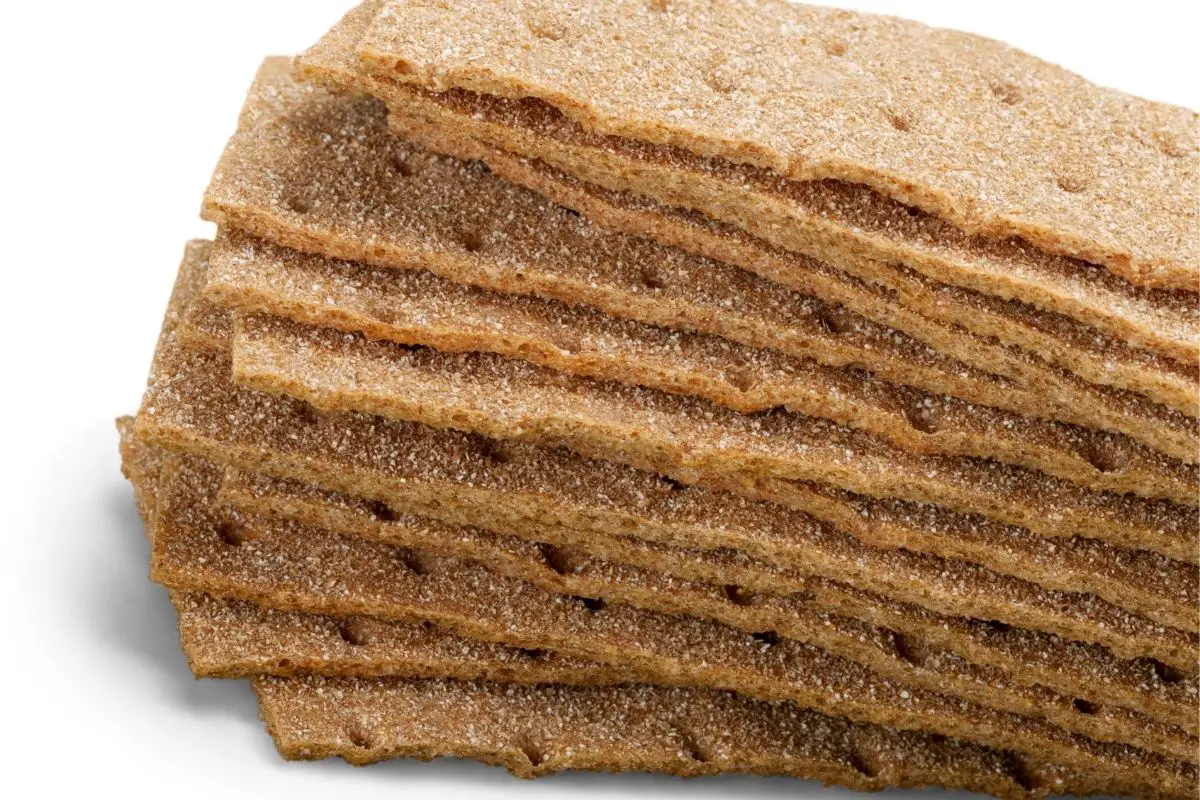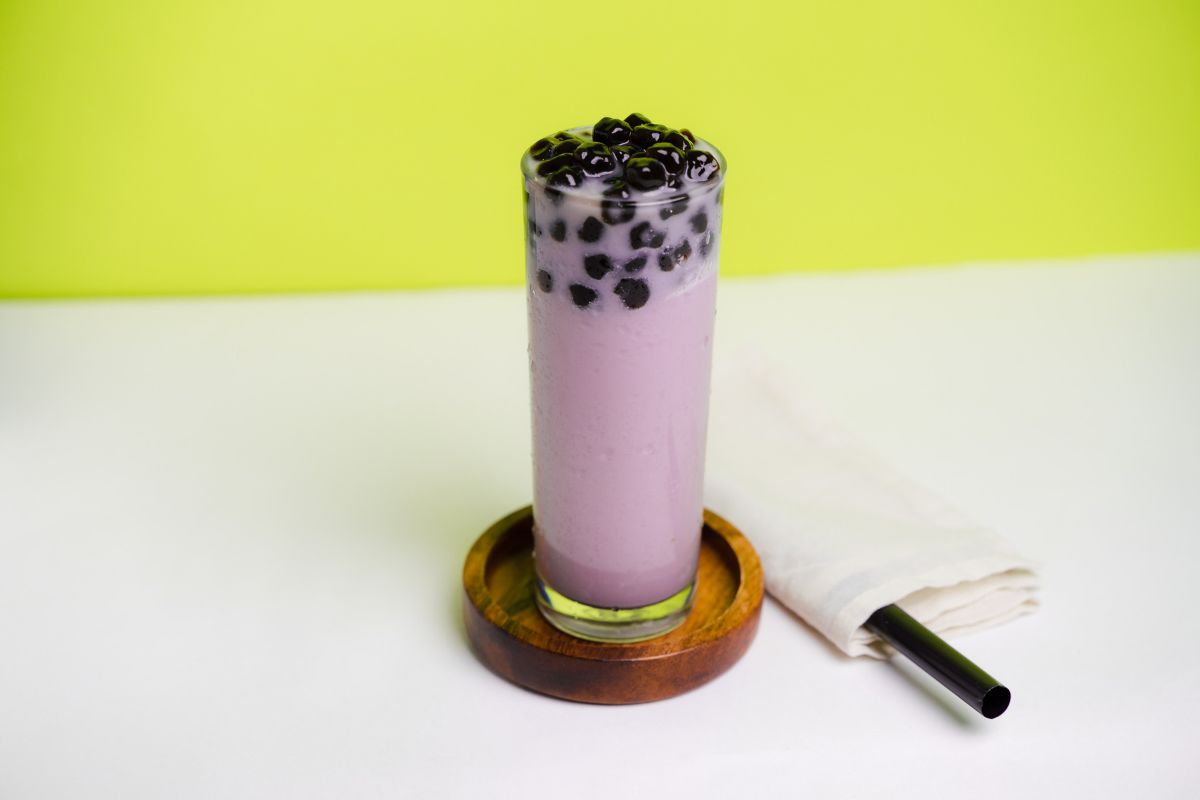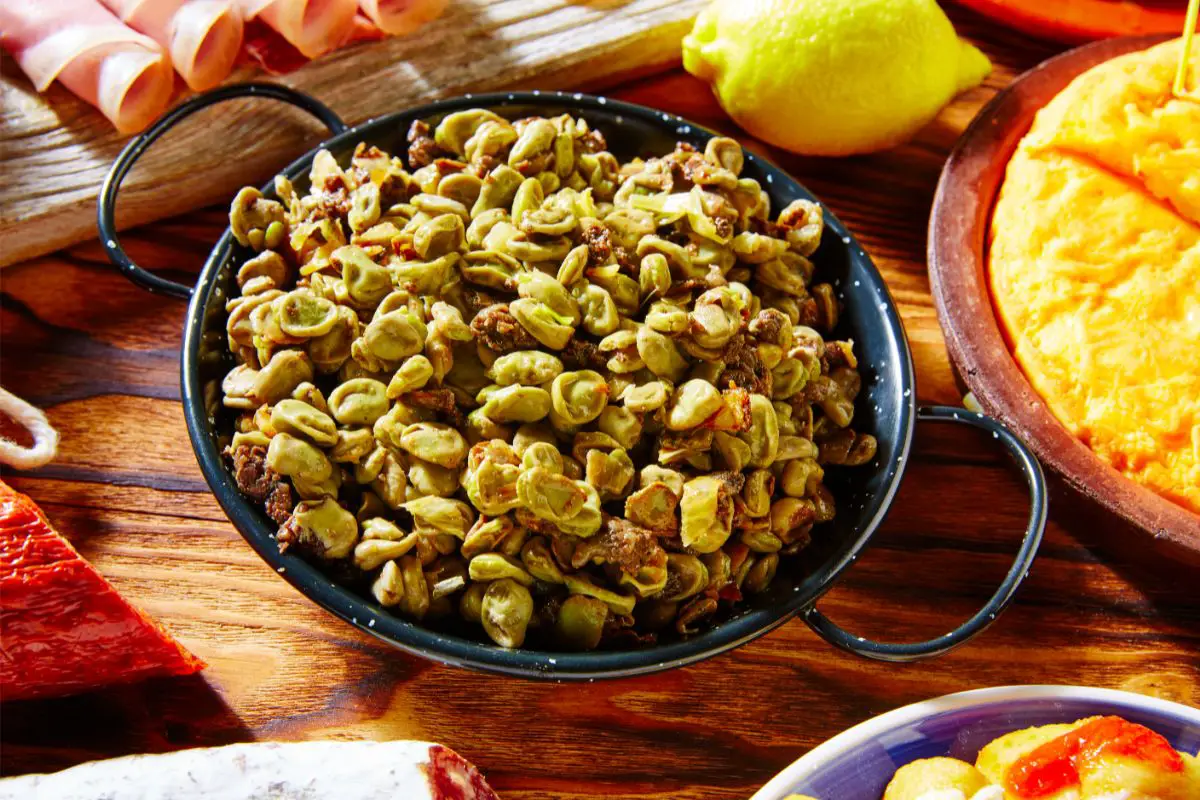Healthy eating and lifestyles are becoming more and more popular in recent years – thanks to a growing awareness of the negative effects of processed foods, and a readily available connection to the internet, which has allowed people to discover previously unknown fruits and vegetables that they otherwise would have remained ignorant to.
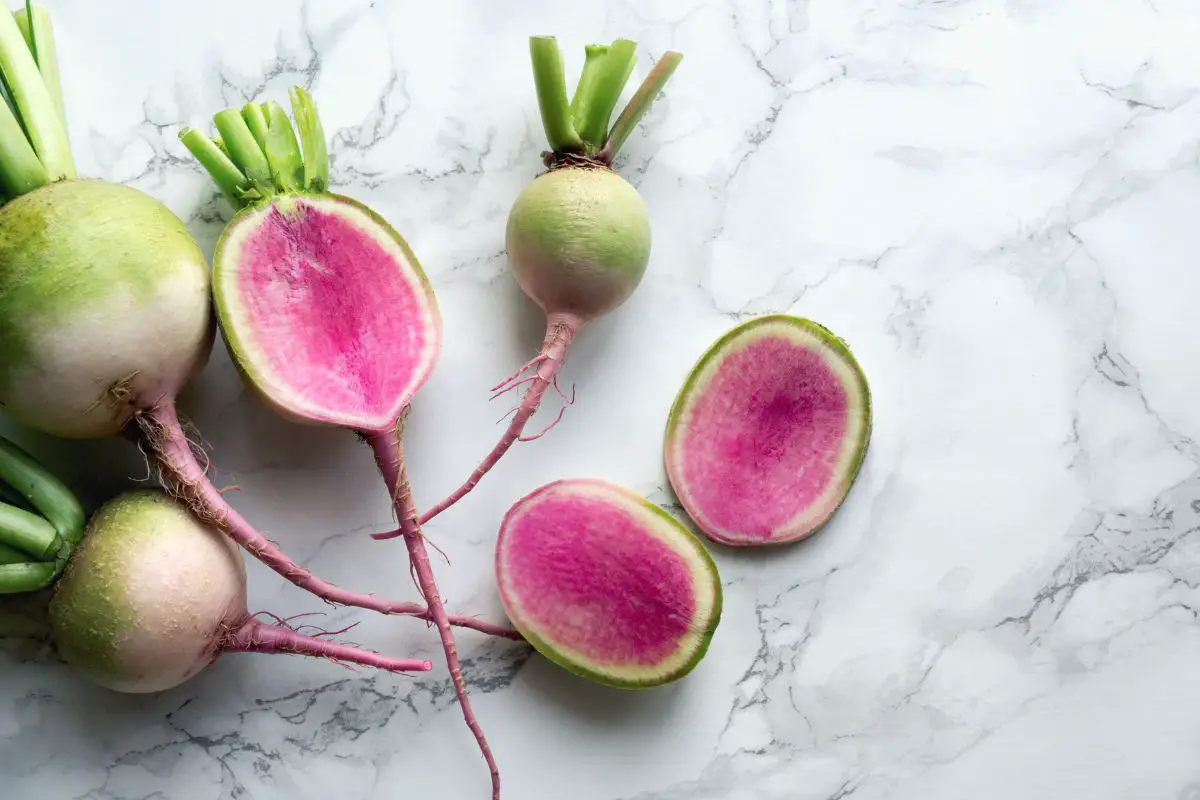
One such vegetable is the watermelon radish. But what exactly is the watermelon radish, and what does it taste like?
What Is A Watermelon Radish?
Watermelon radishes are a member of the radish family, as well as a root vegetable – as well as being heirloom vegetables belonging to the Chinese Daikon radish.
Despite being a radish, the plant has numerous sister variants that include turnips, arugula, and broccoli – all of which bear little resemblance in terms of appearance and taste, but which possess similar growth characteristics that make them classifiable.
What Other Names Do They Have?
They also have numerous other names, and have been frequently rebranded throughout history. Some notable names include beauty hearts, red meat radishes, and rose heart radishes.
Their botanical classification is Raphanus sativus, and they belong to the Brassicaceae family.
Where Are Watermelon Radishes Found?
Generally speaking, watermelon radishes are primarily found in China, where they are used in a wide variety of dishes and recipes.
However, as a relation of the Daikon radish – which was introduced to China from the Mediterranean in 500 BCE – it would perhaps be more prudent to say that it is Chinese by way of the Mediterranean.
What Do Watermelon Radishes Taste Like?
While the uninitiated might think their name alludes to them being sweet (like a watermelon), they actually more closely resemble the taste of actual radishes – albeit somewhat milder and less peppery than standard radishes.
This gives them more scope for cooking, allowing them to be blended seamlessly into recipes without tainting or altering the pepperiness and spiciness of the dish.
Why Are They Called ‘Watermelon’ Radishes?
Watermelon radishes take their name from their appearance – the color of which resembles the famous watermelon.
This is because their outer skin consists of a browny, earthy green color, while the color of the edible flesh inside is a vivid red-pink-purple.
However, as mentioned above, the association with the watermelon is limited to aesthetics alone, and the taste is nothing like their namesake.
How Do People Eat Watermelon Radishes?
Watermelon radishes are versatile, as every part of the plant can in fact be eaten without worry or consequence. This means that they can either be eaten cold or hot.
Consume Cold
The most popular use for the watermelon radish in cold dishes is as part of a salad – where they can add a nice, subtle peppery element to a regular, boring green salad.
When served cold, they can have a slightly fuzzy texture to the skin, as well as a slightly bitter taste to the flavor, which can make them somewhat polarizing for people.
Consume Hot
However, they can also be consumed hot, and cooking watermelon radishes can also improve them in a couple of ways – namely helping to remove the fuzzy skin, and to improve and soften the otherwise bitter flavor.
Use As Garnishes
They are also commonly used as edible garnishes – usually at the side of cooked dishes, or as part of the salad itself.
Their attractive pink center makes them an aesthetically pleasing addition to any plate, and makes them far more interesting and appealing than plain old mint or basil leaves.
When Can Watermelon Radishes Be Found?
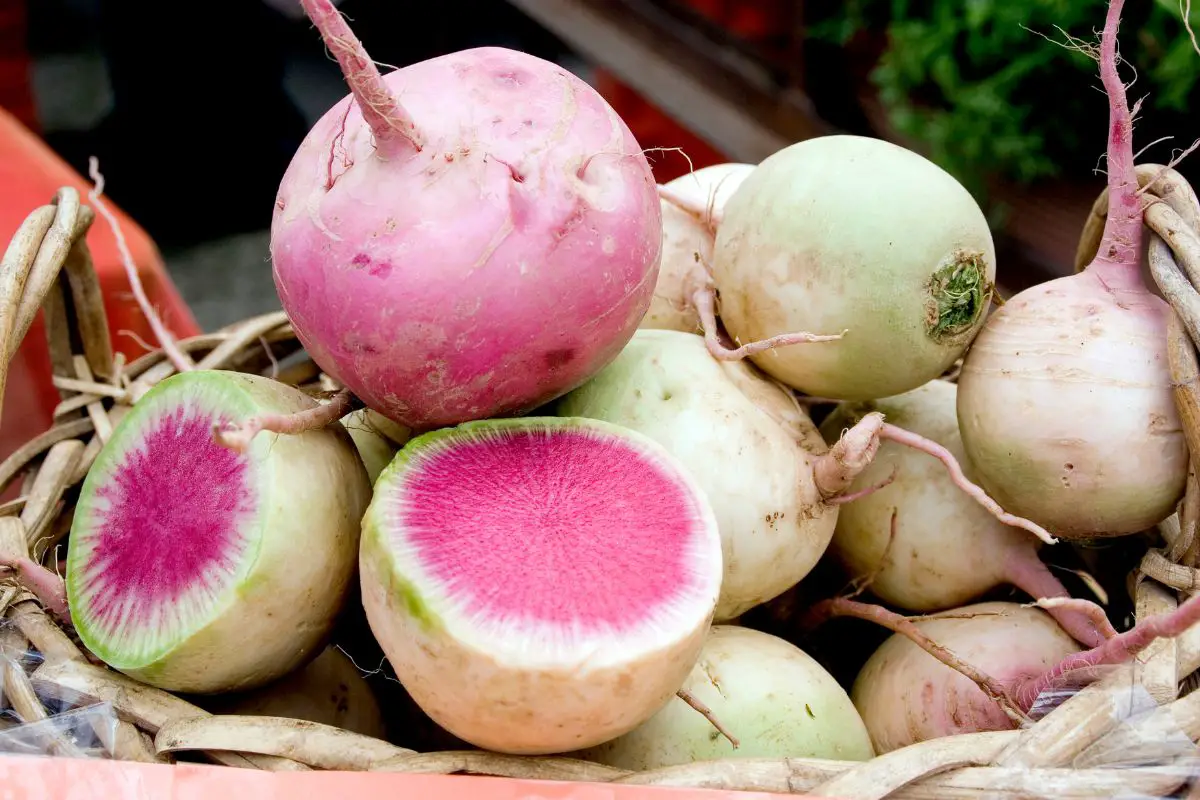
Funnily enough, watermelon radishes can also be found all throughout the year, something that only adds to their appeal and versatility within cooking.
However, the peak seasons for these plants tend to be winter and spring, when the temperature is not so warm as to damage them or dry them up.
What Benefits Do They Have?
As with most fruits and vegetables, watermelon radishes have specifically associated health benefits that can make them a worthy inclusion within a balanced and healthy diet.
Vitamin C
Firstly, watermelon radishes are a surprisingly good source of vitamin C, which can be good for strengthening the immune system, reducing inflammation, and boosting the production of collagen in the skin – something that helps to reduce the aging process and give our skin a more youthful appearance.
Vitamin A
They also contain plenty of vitamin A, which can be good for protecting and regulating the organs. This can help protect us from kidney and liver diseases, as well as other degenerative diseases that can become more rife as people age.
Calcium
They are good sources of calcium, an element that is especially good for the bones and teeth, and which can help bolster and strengthen us against illness and brittleness of the bones.
This can be especially beneficial as we age, helping to avoid nasty breaks and sprains.
Potassium
They also contain potassium, which can be highly beneficial to balancing the fluid levels in the body, as well as helping to lower blood pressure.
In the long run, this could help us to avoid things like heart disease and strokes, as well as unforeseen horrors like heart attacks.
Can They Be Obtained In The West?
Luckily for those who don’t live in China, watermelon radishes can usually be located in well stocked grocery stores – especially in parts of the United States like California.
They are also now grown naturally in the United States, and can be found all throughout the country, with their notable growing season being the fall into the early spring.
This means that they are relatively evergreen, and can be grown, sold, and consumed nearly all year round – with the exception of mid-spring into the summertime.
To have luck finding some watermelon radishes for yourself, the best place to check would be farmer’s markets.
Final Thoughts
And there we have it, everything you need to know about watermelon radishes, where they are found, and what exactly they taste like.
It’s true that vegetables and healthy eating are becoming more and more popular in recent years – as people are becoming more aware of the ills of processed foods, and seek to improve their chances of health, prosperity and long life.
One such vegetable is the watermelon radish, which remains a popular choice for people all over the world.
So if you are looking to expand your palette, and try new things, then why not sample the watermelon radish? Something tells me you won’t be disappointed!
Watermelon Radishes: Everything You Need To Know!
Course: Taste Like4
servings30
minutes40
minutes300
kcalIngredients
Watermelon Radishes
Directions
- Watermelon radishes are versatile, as every part of the plant can in fact be eaten without worry or consequence. This means that they can either be eaten cold or hot.
- The most popular use for the watermelon radish in cold dishes is as part of a salad – where they can add a nice, subtle peppery element to a regular, boring green salad.
- When served cold, they can have a slightly fuzzy texture to the skin, as well as a slightly bitter taste to the flavor, which can make them somewhat polarizing for people.
- However, they can also be consumed hot, and cooking watermelon radishes can also improve them in a couple of ways – namely helping to remove the fuzzy skin, and to improve and soften the otherwise bitter flavor.
- They are also commonly used as edible garnishes – usually at the side of cooked dishes, or as part of the salad itself. Their attractive pink center makes them an aesthetically pleasing addition to any plate, and makes them far more interesting and appealing than plain old mint or basil leaves.
Recipe Video
https://youtu.be/BbGtoWWXF40Video can’t be loaded because JavaScript is disabled: How To Grow Watermelon Radish – A Delicious & Quick Growing Radish Variety For Your Garden (https://youtu.be/BbGtoWWXF40)- Author
- lass="abh_posts">Recent Posts
- What Exactly Do Chickpeas Taste Like? Is There A Distinct Flavor? - September 30, 2023
- Top 11 Low Carb Options at Sonic Drive-In for Keto Diet - September 30, 2023





